Poisonous fungi – Death Cap and Destroying Angel v False Deathcap
The death cap is the most deadly of all fungi, a lethal dose being as little as 20g. What makes it most dangerous is that symptoms do not usually show until 6 – 24 hours after ingestion, and by this time it is often too late for effective treatment. As identification of the cause of poisoning is crucial, this gap also makes it difficult to trace the source. When symptoms do set in, they are agonising and pretty much irreversible: violent vomiting, diarrhoea and abdominal pain before liver and kidney are attacked by amatoxins, ending protein synthesis and causing cell death. This is damaging enough, but the toxins are then recirculated through the system to do their violence again. This is doubly cruel, as the victim may experience apparent respite for a day or so before his major organs are fully destroyed.
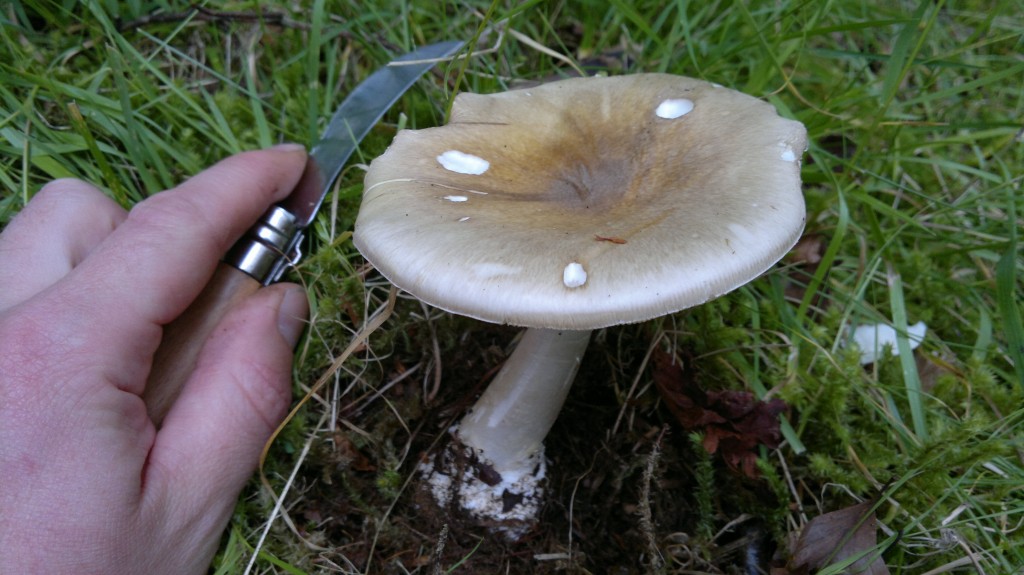
Death Cap mushroom (Amanita phalloides). This is the first death cap I found in SW Scotland after 20 years searching! This image does not show all the key features of a death cap – but note the volva at the stipe base.
So here are the key features that you should learn to recognise:
- Cap – 4-12cm diameter, round, convex to flat, near white to yellowish and olivaceous green. Sometimes with moveable white scales, but these are often washed off.
- Stem – 5-12cm, white, ring (often feint as above), thickening to basal bulb encased in white volva (again, the example above is unusually indistinct). The volva can be hidden beneath ground level/vegetation. This is why collecting whole specimens is important when identifying fungi. See here for a discussion of this. In perfect condition (which toadstools rarely are!) you may also note a ‘snakeskin’ patterning on the stem – though this is often indistinct.
- Gills – unattached to stem (free), crowded, white.
- Habitat – deciduous woods, especially beneath oak.
- Season – August – November (UK)
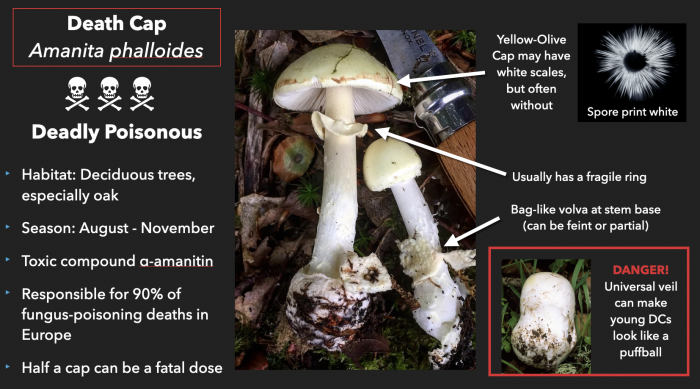
Death cap – key identification features. A graphic from my online webinar “20 Fungi to know before you die“
Death caps seem to be quite scarce in Scotland. It took me many years of searching to find my first one. Since then I’ve got my eye in and have a few spots for them across SW Scotland now. They are much more common in S England, especially in oak woods.
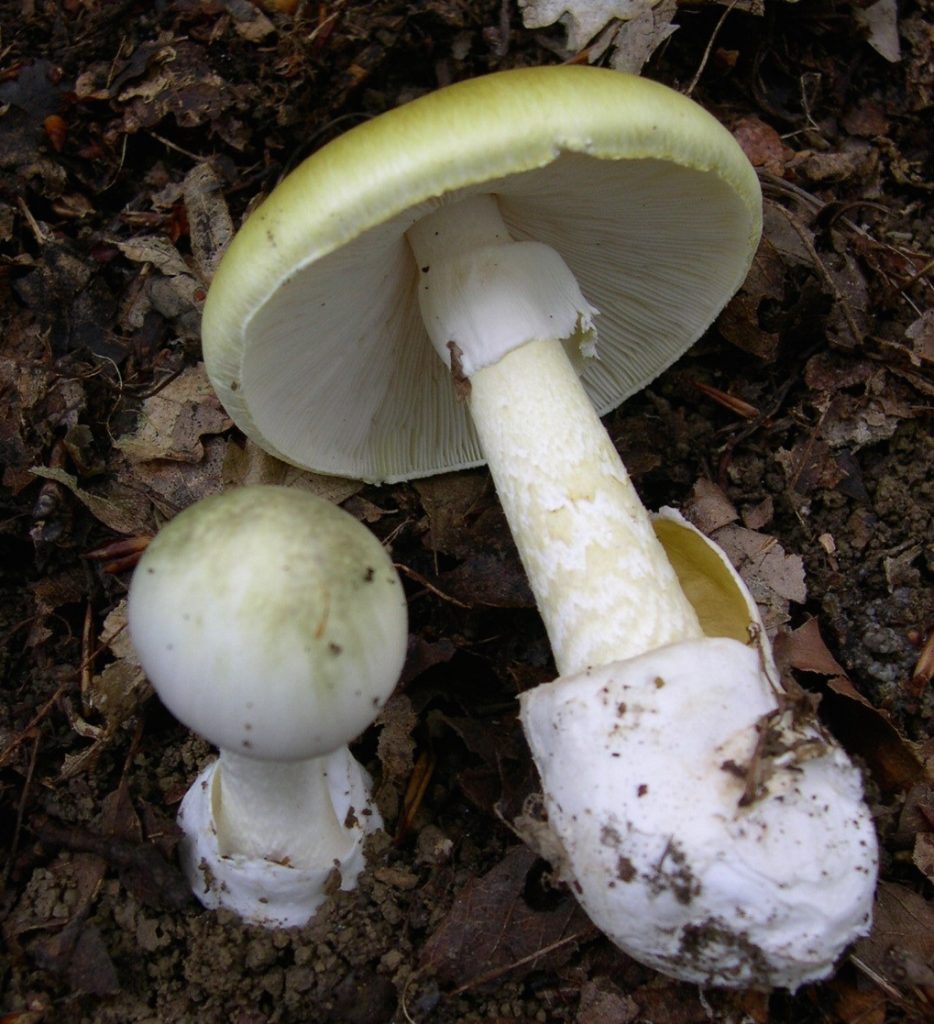
Death Cap, amanita phalloides – more typical looking here than on some of my other images. This photo clearly show the ‘snakeskin’ patterning on the stipe which is often not so apparent. Source: Wiki
A few years ago a patch of about 30 death caps appeared in a 2 square metre area under oak and hazel near my home. I’d never seen them there before, and have never seen more than the odd one there since. Witchcraft…?! Or more likely just a reminder that fungal mycelium can be present for long periods without producing mushrooms…
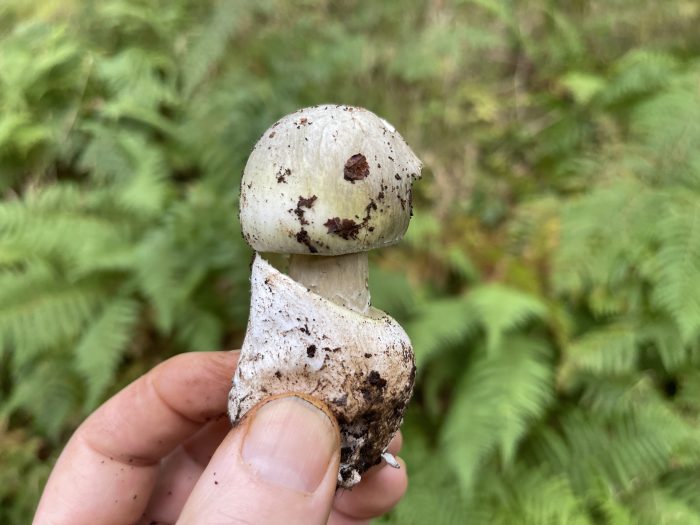
Death cap, Amanita phalloides, emerging from its universal veil. Galloway, late September. Image ©GallowayWildFoods.com
The Destroying Angel (Amanita virosa) has very similar features but is pure white, and eerily beautiful in shady woodland. I have found it under oak, beech and conifers in SW Scotland. It is lethal in the same way as the death cap.
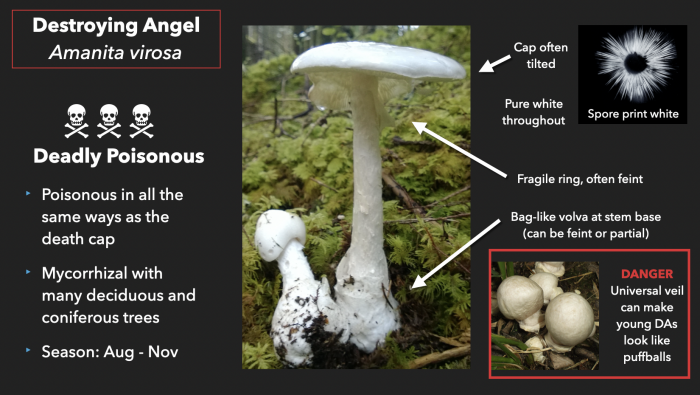
Destroying angel – key identification features. An image from my online webinar “20 Fungi to know before you die”
The false deathcap (Amanita citrina) is distinguished from the true deathcap by its bulbous base and smell of raw potatoes. It is an edible species, though not nearly tasty enough to warrant the worry of mistaking it for its notorious cousin. Be very, very sure of your identification skills if you plan to eat it! It is much more common than the death cap or destroying angel in W Scotland, appearing mostly under beech and oak trees.
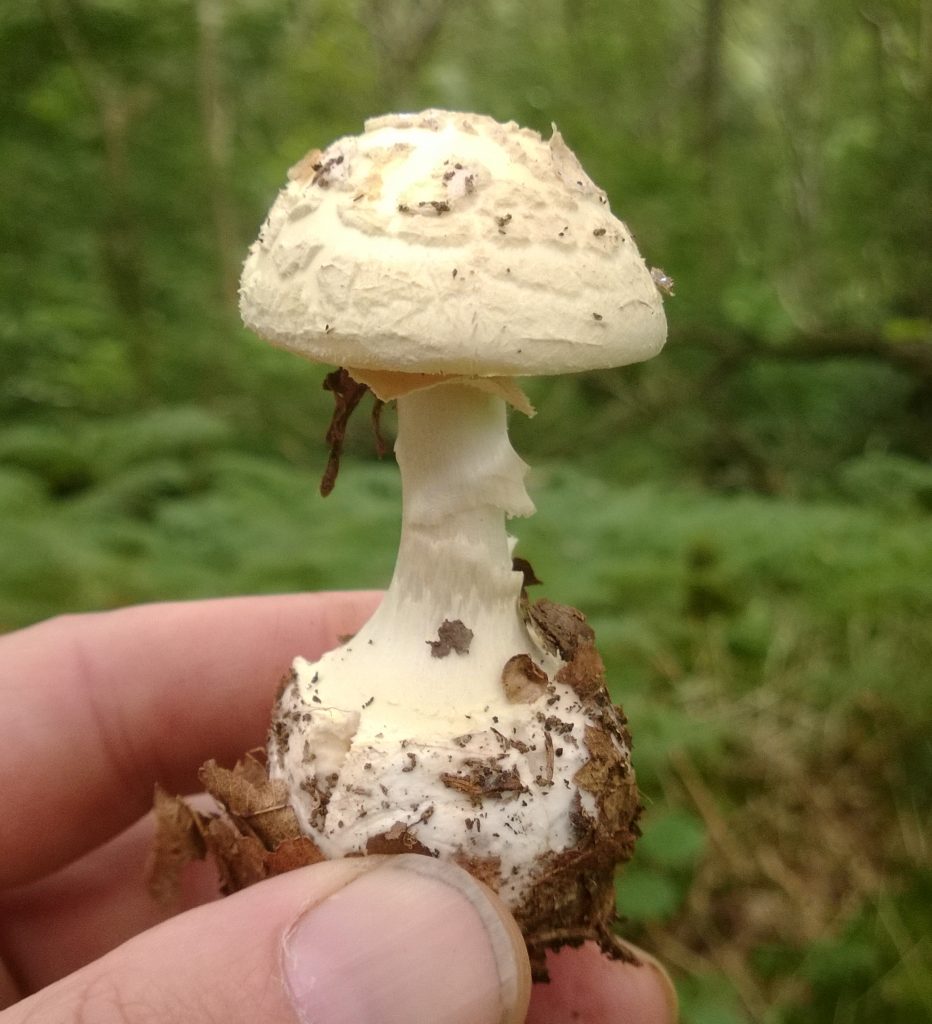
False deathcap, Amanita citrina. Edible…IF you are VERY sure of your identification skills! Note the very bulbous base. The smell of raw potatoes is distinctive.
The best advice to the worried beginner is to be extremely wary of any mushroom with a volva at the base of the stipe, and follow my maxim:
“Don’t be a random Amanita-Eater!”
With all this said, people too often get (understandably) over-tense about deadly poisonous wild mushrooms, imagining them at every turn. Here is a post I made on social media that gives a little perspective on the subject…
View this post on Instagram
Related articles:
- Poisonous species
- Edible Wild Fungi Guide
- Mushrooms and Toadstools: What’s The Difference?
- The Day I Ate A Deadly Plant: The Spectrum of Edibility
- Introduction to Fungi Foraging
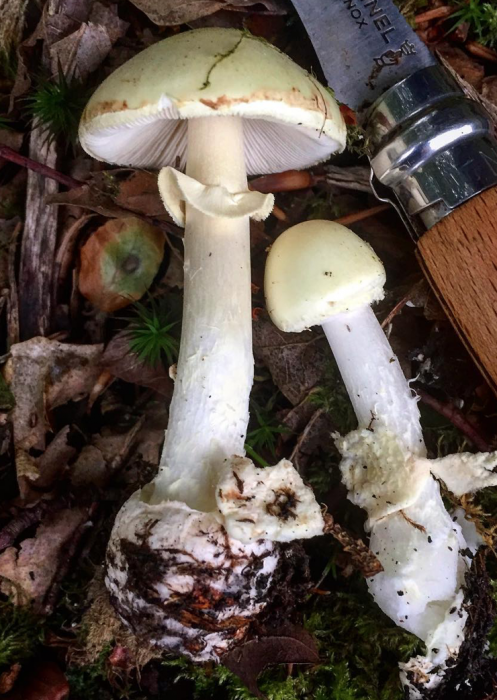
3 Comments
Hi mark, your info here has really helped calm my nerves about where death caps many grow but I have a question I’d be so grateful if you could answer….ive also read that death caps may grow in a field by a woodland, is that simply bcs the roots are under the ground of the field? I am a panicking because we have a natural limestone cliff wall in our back garden ( in northern Ireland ) and on top of that theres a row of trees and they run down the street. I don’t know if that counted as woodland but I feared the spores could drop down into our garden which has got a few trees (not together , at different sides of the garden), and grow death caps, and maybe some day my puppy would snack on them! Generally do death caps need to be in a woodland environment to grow? I assume if they could grow other places more easily then more would be heard about it. Thankyou so much!! Best wishes, ML
Hi Mary, Given the right tree/soil/climate, DC’s can occur. They aren’t common where I am in SW Scotland (not far from you), but that doesn’t mean you definitely couldn’t have any. All I can say is keep an eye out. They don’t jump down anyone’s throat, and have a short growing season, so hopefully you could spot them if they were there
Thoroughly enjoyed reading your information and, like a previous respondant, my mind was put at rest. I do definitely need to find out more. Particularly about preparing fungi that may be toxic Thank you 🙂